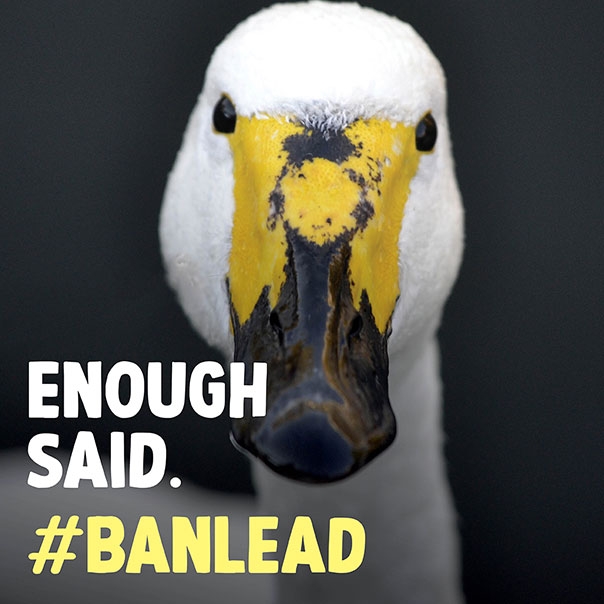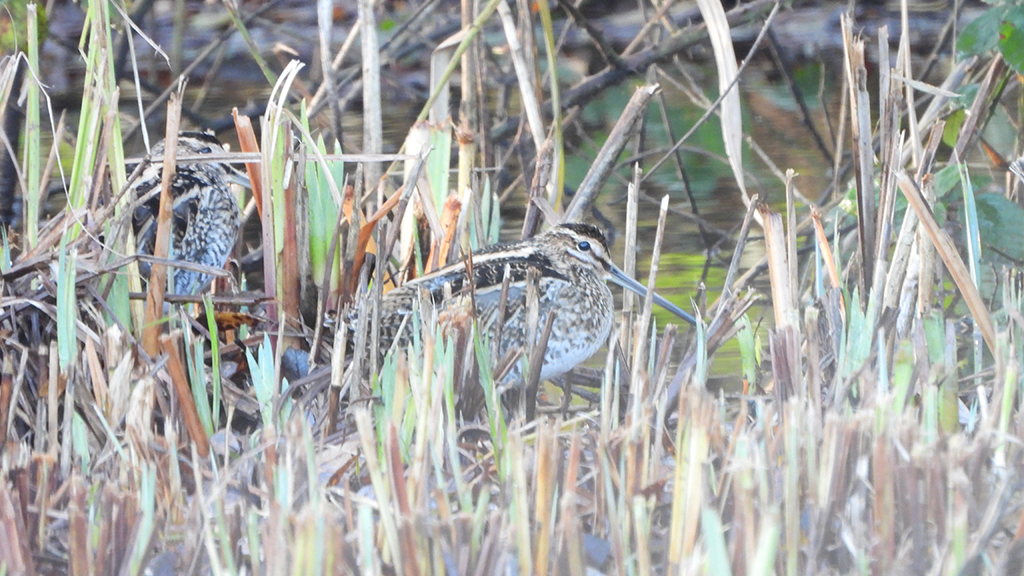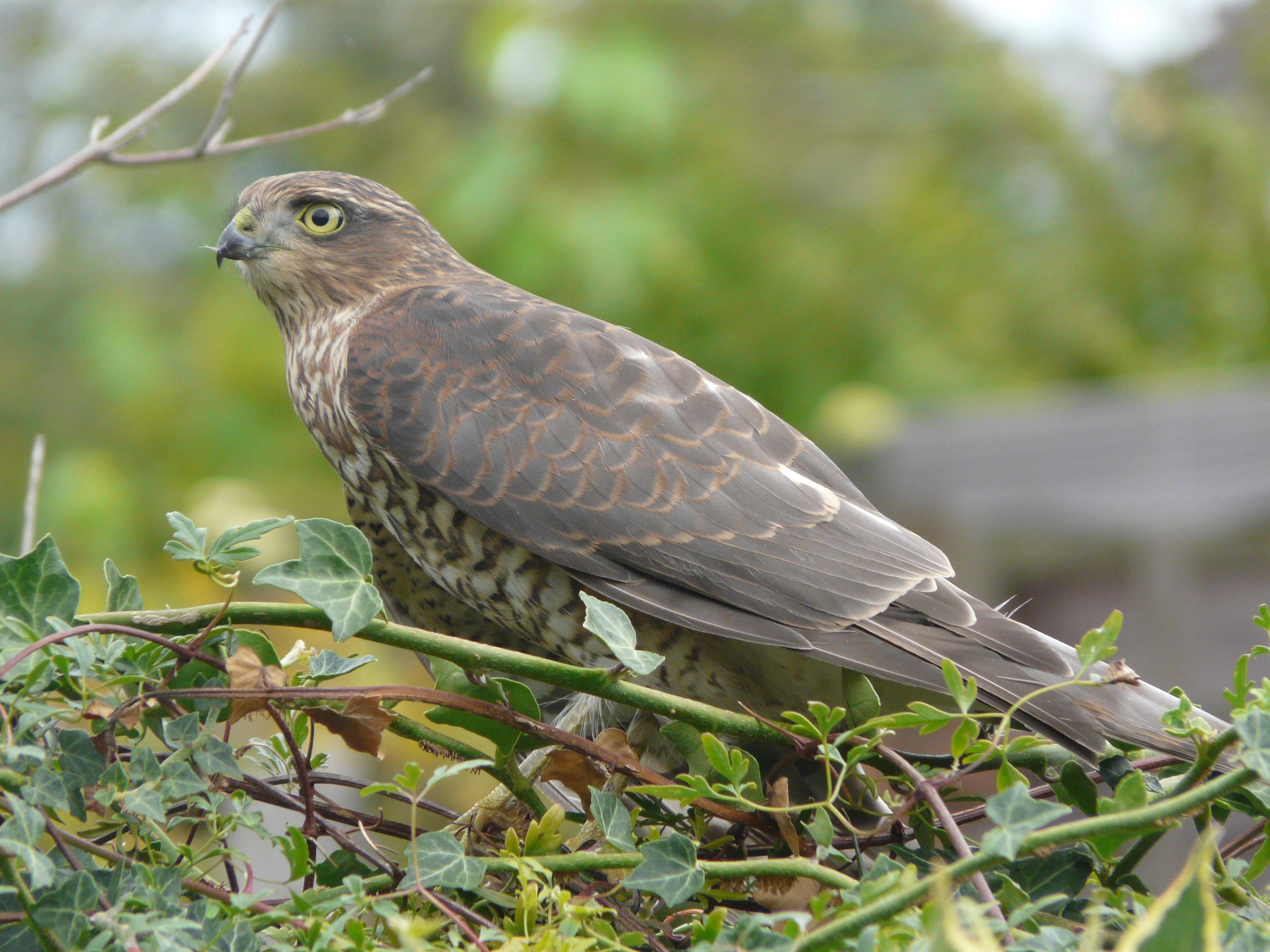Tackling lead ammunition poisoning

Update: We made lead ammunition history
Following a decades-long campaign led by scientists and campaigners across WWT, the government has finally banned lead ammunition for outdoor shooting in Great Britain.
Thanks to you, some of our most precious wildlife – including migratory Bewick’s and Whooper Swans – have been thrown a vital lifeline, and an end to this toxic scandal is finally within sight.
Find out more
Up to 100,000 waterbirds in the UK and one million in Europe die every year through ingesting poisonous lead shot. But it’s not just birds that it harms.
The problem
When billions of individual lead shotgun pellets are left to contaminate our wetland and terrestrial habitats, they leave a toxic legacy for our environment, wildlife and people.
It’s hard to think of a better example of a One Health issue – the term used by the World Health Organisation for issues that affect environments, people and animals – than the poisoning caused by lead ammunition worldwide.

In the UK, more than 7,000 tonnes of lead ammunition is discharged into the environment every year. Birds often mistake tiny shot pellets for grit or seeds, and eat them. Dead and dying birds are usually taken quickly by predators – making their deaths ‘invisible’ to shooters and the wider public alike.
It has taken WWT’s scientific research to discover the extent of the problem in the UK. Our long-term waterbird health surveillance has found 10% were killed by lead poisoning – sometimes with dozens or even hundreds of ingested shot pellets found in their gizzards (a part of their stomach that needs grit to grind their food). Migratory swans like whoopers and Bewick’s were worst affected, with lead poisoning accounting for a quarter of deaths.
The UK shares many migratory swans, ducks and geese with the rest of Europe where it claims the lives of one million waterbirds each year. A further 3 million are estimated to suffer ill health from lead poisoning.
Of those that survive, we know that their behaviour, resistance to diseases, mobility and ability to breed are affected. Our research found that nearly half of live whooper swans we tested had worrying lead levels in their blood with 10% of the birds in measurably poor body condition as a result.
The problem affects animals higher up the food chain too. Embedded lead shot and bullet fragments are eaten by birds of prey and other scavengers and predators leading to death directly or indirectly via poorer ability to hunt and find food. From griffon vultures in Spain to sea eagles on British coasts, this source of poisoning has significant impacts on vulnerable populations.
Humans are not exempt from lead’s damage. Lead ammunition finds its way onto our plates where it presents risks for people eating lead-shot game meat. Even dogs are exposed to lead in hunting households or via pet food containing this kind of game meat.
The solution
Lead has been banned from petrol, paint and pipes. But in 2025, lead from ammunition is still being scattered into our environment.
The solution is for shooters to use non-poisonous alternatives to lead ammunition, which are available for all types of guns and proven to be equally effective. Many hunters are already using non-toxic ammunition to prevent poisoning the environment, and some food retailers are now only selling lead-free game on health grounds.
But this simply hasn't been enough.

There are some restrictions on using lead shot in the UK. However, WWT’s field testing shows the number of birds ingesting lead still hasn’t decreased despite restrictions. This could be because many birds feed in fields where lead shot can still be legally used, or because some shooters are still using it illegally.
In 2020, the shooting sector announced a voluntary transition away from lead ammunition, but five years on, evidence shows this has only had a marginal effect. In March 2025, research led by the University of Cambridge, in collaboration with WWT and other partners, found that of 171 pheasants killed in the 2024/25 season, all but one had been shot with lead ammunition.
Repeated WWT investigations found that around 70% of ducks sold as locally shot in England were illegally shot with lead, and this illegal activity has not improved over time.
It took policy to remove lead from petrol, paint and pipes. And it will take policy to remove lead from ammunition – the last significant source of lead poisoning for wildlife.
2025 - A critical moment
Following a crucial Health and Safety Executive review into restricting lead ammunition, Environment Secretary Steve Reed has taken the important step to consign lead ammunition to history.
Thanks to the thousands of people who wrote to Steve Reed, our incredible campaign partners, and the tireless efforts of scientists and campaigners at WWT who’ve fought every step of the way, we can safely say that the era of lead ammunition is coming to an end.
It’s not over yet – the government must bring in this ban as soon as possible and ensure that the laws are complied with. But for now, we can celebrate.
Find out more below about how we got here.
Find out more


